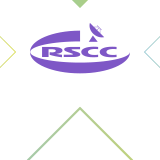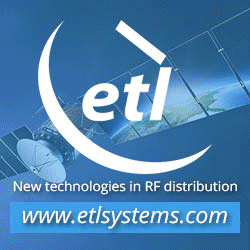Relativity Unveils Its
Plans for Terran R, the First Fully Reusable,
Entirely 3D-Printed Rocket, Including $650M
Series E to Accelerate Production
June 08, 2021
Relativity Space has
revealed its plans for Terran R, its fully
reusable, entirely 3D-printed launch vehicle. To
help scale production for Terran R, Relativity
also announced a $650 million Series E equity
funding round. The round was led by Fidelity
Management & Research Company LLC with
participation from investors including Baillie
Gifford, funds and accounts managed by
BlackRock, Centricus, Coatue, K5 Global, Soroban
Capital, Tiger Global, Tribe Capital, XN, Brad
Buss, Mark Cuban, Jared Leto, and Spencer
Rascoff’s 75 & Sunny, among others.
“From our founding days in
Y Combinator just five years ago, we planned on
3D printing Terran 1 and then Terran R – a 20X
larger fully reusable rocket – on our Factory of
the Future platform,” said Tim Ellis, CEO and
co-founder of Relativity. “Today we are one step
closer to this goal. Together with our first
rocket Terran 1, our second product, Terran R,
will continue to take advantage of Relativity's
disruptive approach to 3D printing – reduced
part count, improved speed of innovation,
flexibility, and reliability – to bring to
market the next generation of launch vehicles.
Relativity was founded with the mission to 3D
print entire rockets and build humanity’s
industrial base on Mars. We were inspired to
make this vision a reality, and believe there
needs to be dozens to hundreds of companies
working to build humanity’s multiplanetary
future on Mars. Scalable, autonomous 3D printing
is inevitably required to thrive on Mars, and
Terran R is the second product step in a
long-term journey Relativity is planning ahead.”
Created in Relativity’s
Factory of the Future by the same printers as
Terran 1, Terran R has unique aerodynamic
features with algorithmically generated and
optimized structures. The company’s proprietary
3D printing process is enabled by software and
data-driven manufacturing, exotic 3D printed
materials, and unique design geometries that are
not possible with traditional manufacturing,
driving a faster rate of compounding progress
and iteration in the industry. As a two-stage,
216-foot-tall rocket with a 16-foot diameter,
and a 5-meter payload fairing, Terran R will be
fully reusable including its engines, first
stage, second stage, and payload fairing, and
will be capable of launching over 20,000kg to
low Earth orbit (LEO) in reusable configuration.
Terran R will be outfitted with seven entirely
3D-printed Aeon R rocket engines capable of
302,000 lb. thrust each, while its upper stage
houses one Aeon Vac engine, with a pathfinder
engine having already completed full duration
testing at the beginning of this year. Aeon R is
a scaled, high pressure version of the gas
generator cycle Aeon 1 already planning to fly
on Terran 1, and similarly uses cryogenic liquid
methane and oxygen propellants and runs with
autogenous tank pressurization. Starting in
2024, Terran R will launch from Launch Complex
16, the company’s site at Cape Canaveral, where
Terran 1 is also set to launch this year.
Combined with the ability
to launch 20X more payload than Terran 1, Terran
R provides both commercial and government
customers affordable access to space, in LEO and
beyond. With low earth orbit, medium earth orbit
and geosynchronous satellite constellations
representing the largest part of the growing
market, Terran R helps accommodate the company’s
growing pipeline of commercial interest,
including the recent signing of its first anchor
customer launch contract for Terran R.
“There’s an organic
relationship between 3D-printing and
reusability, and it gives us an unparalleled
advantage to design the best fully reusable
rocket possible,” said Ellis. “Over the last
year, we found ourselves being asked by the
market to accelerate development of our larger
launch vehicle, so we knew it was time to double
down on our existing plans and scale the Terran
R program even faster and build production
capabilities at scale sooner.”
Terran R will also
eventually offer customers a point-to-point
space freighter capable of missions between the
Earth, Moon and Mars. “Terran R is at the
cutting edge of rocket innovation and design,”
said Zach Dunn, SVP of Engineering and
Manufacturing at Relativity. “Fully reusable and
entirely 3D printed, Terran R will be well
suited to serve customers’ evolving needs in the
large satellite constellation industry, while
also representing a significant leap towards
achieving our mission of building humanity’s
industrial base off of Earth.”
Disrupting 60 years of
aerospace, Relativity’s radically simplified
supply chain enables the company to print its
rockets with 100x fewer parts in less than 60
days. With rapid software and hardware changes,
the same Factory of the Future platform
Relativity developed for Terran 1 is capable of
scaling to produce Terran R. To date, Relativity
has secured multiple contracts across nine
customers for Terran 1 from both private and
government entities, including a recently
announced U.S. Department of Defense (DoD)
contract, facilitated by the Defense Innovation
Unit (DIU), a Venture Class Launch Services
Demonstration 2 contract with NASA as well as an
on-demand satellite launch contracts with
Iridium and Telesat. Relativity has now
completed printing over 85% of the first Terran
1 flight article, including its first and second
stage, keeping momentum for its launch this
year.











